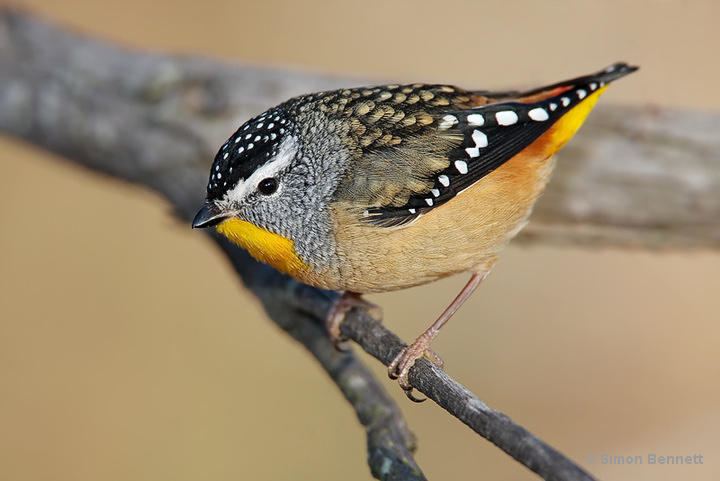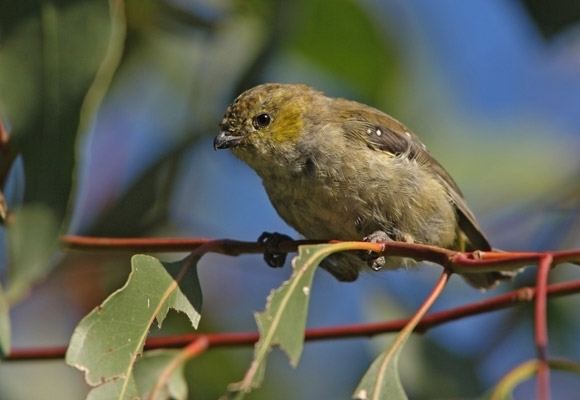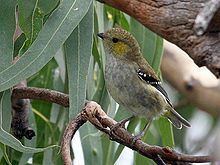Genus Pardalotus | Scientific name Pardalotus quadragintus Rank Species | |
 | ||
Similar Pardalote, Bird, spotted pardalote, Striated pardalote, Dusky robin | ||
Forty spotted pardalote abc news story
The forty-spotted pardalote (Pardalotus quadragintus) is one of Australia's rarest birds and by far the rarest pardalote, being confined to the south-east corner of Tasmania.
Contents

Description

A small, energetic passerine about 9 to 10 cm (3.5 to 4 in) long, the forty-spot is similar to the much commoner spotted pardalote (Pardalotus punctatus), but has a dull greenish-brown back and head, compared to the more colourful plumage of the former, with which it shares its range, and there is no brow line. The rump is olive, the under-tail dull yellow. The chest is white with light yellow tints. The wings are black with white tips, appearing as many (closer to 60 than 40) discrete dots when the wings are folded. There is no seasonal variation in plumage; juveniles are slightly less colourful than the adults.
Distribution

Now found reliably only in a few isolated colonies on south-eastern Tasmania, most notably on Maria Island and Bruny Island. It is occasionally reported from the suburbs of Hobart. Sedentary or locally nomadic over its restricted range, it is declining in numbers and listed as endangered. It is most successful on Maria Island, which is managed as a refuge. Sites identified by BirdLife International as being important for forty-spotted pardalote conservation are Bruny Island, Central Flinders Island, Maria Island and South-east Tasmania.
Habitat
Relatively dry eucalypt forests with high concentration of the white gum, where it forages almost exclusively.
Behaviour

Forty-spots form pairs and are territorial during the breeding season, but may form small flocks during the winter. They are insect hunters and forage methodically for small insects in the canopy. They nest in tree hollows and occasionally in ground burrows.

